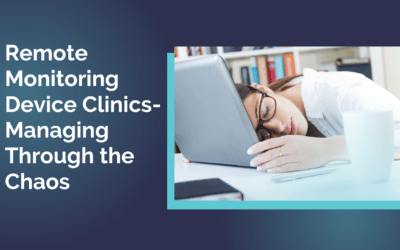Those who have dedicated their lives to cardiology are experiencing burnout at a record pace.
This is especially true for physicians and medical teams remotely monitoring patients with CIEDs (Cardiac Implantable Electronic Devices). The growing number of patients involved in remote monitoring (RM) programs has led to increased data that cardiac clinics need to review and manage.
The issue will only get worse in the coming years. According to the results of a 2019 study led by Divyang Patel, MD, Cleveland Clinic, some 300,000 patients a year are receiving new CIED implants – making RM even more complex and challenging for clinicians.
In her 2022 study, Challenges in managing a remote monitoring device, Margaret Harvey, Ph.D., ACNP-BC, uncovered major themes plaguing the efficiency of RM in the cardiac clinic, such as poor connectivity, staffing issues, and a large volume of false positive alerts.
Medical staff is drowning in an onslaught of data that cripples staff productivity and efficiency.
But with every challenge comes opportunity. Dr. Harvey says the industry must adapt and develop innovative solutions that move healthcare forward. Luckily, digital health solutions already exist that can help ease the burden of RM data processing. Implicity offers a fully integrated SaaS solution that automates remote workflows, easing the burden on already overworked clinical staff.
For example, the Implicity platform recently received FDA approval on an exclusive AI algorithm that automatically reduces the number of ILR false positives by 79% *. False positives from ILRs aren’t mere annoyances; they burden medical teams with so much extra work that it can effectively reduce the number of patients a clinic can support. Using an AI algorithm to reduce the “noise” of ILR alerts reduces the time clinicians and staff must dedicate to taxing data analysis.
Also worth mentioning is Implicity’s disconnected patient feature. The platform auto-notifies the patients’ medical team when they become disconnected from the manufacturer’s website. A series of automated SMS messages are exchanged between the platform and the patient to obtain and record the reason for the disconnection, all without involvement from the clinical staff. Managing this process automatically ensures patient records are always up to date, have greater billing accuracy, and have higher staff productivity.
There are many choices regarding remote monitoring software, but they are not all created equal. Clinics should look for a partner that easily integrates with their EHR and all the device manufacturer websites to streamline their process. Keeping future growth in mind, look for AI platforms to ensure continued access to relevant, robust data.
By:Megan Grosz

